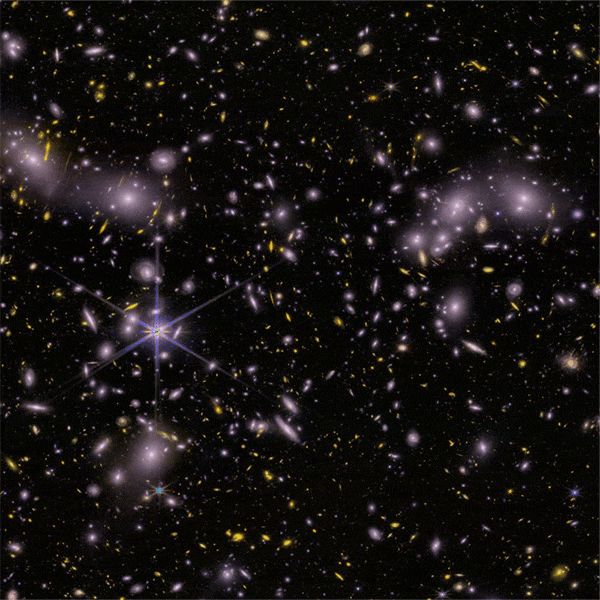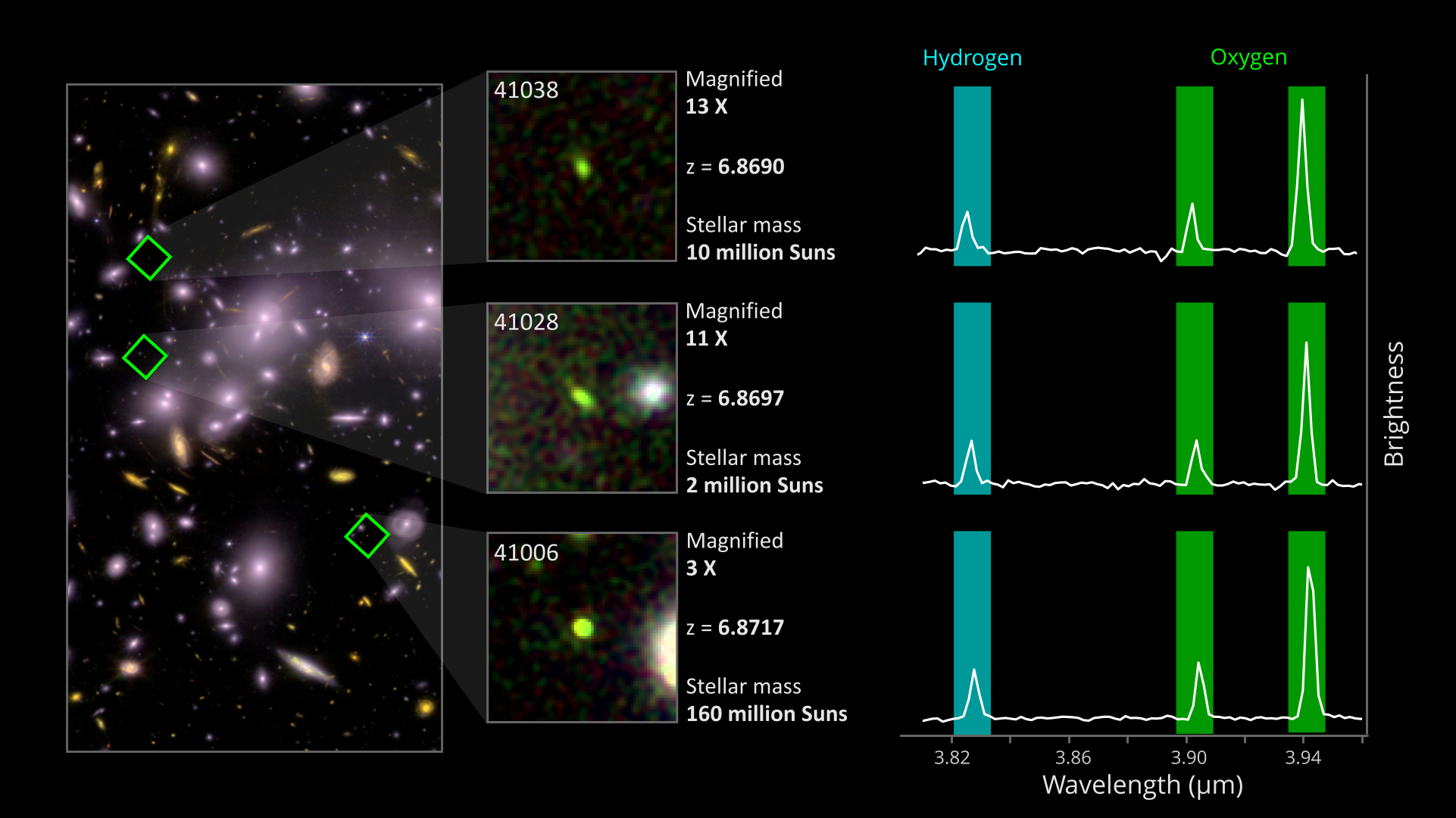- Webb
- News
- Overview
- Science
- Observatory
- Multimedia
- Team
- More

NASA/ESA/CSA/Bezanson et al. 2024 and Wold et al. 2025
Astronomers using data from NASA's James Webb Space Telescope have identified dozens of small galaxies that played a starring role in a cosmic makeover that transformed the early universe into the one we know today.
"When it comes to producing ultraviolet light, these small galaxies punch well above their weight," said Isak Wold, an assistant research scientist at Catholic University of America in Washington and NASA's Goddard Space Flight Center in Greenbelt, Maryland. "Our analysis of these tiny but mighty galaxies is 10 times more sensitive than previous studies, and shows they existed in sufficient numbers and packed enough ultraviolet power to drive this cosmic renovation."
Wold discussed his findings Wednesday at the 246th meeting of the American Astronomical Society in Anchorage, Alaska. The study took advantage of existing imaging collected by Webb's NIRCam (Near-Infrared Camera) instrument, as well as new observations made with its NIRSpec (Near-Infrared Spectrograph) instrument.
Image A: Webb search finds dozens of tiny, young star-forming galaxies

Download high-resolution images from NASA's Scientific Visualization Studio
The tiny galaxies were discovered by Wold and his Goddard colleagues, Sangeeta Malhotra and James Rhoads, by sifting through Webb images captured as part of the UNCOVER (Ultradeep NIRSpec and NIRCam ObserVations before the Epoch of Reionization) observing program, led by Rachel Bezanson at the University of Pittsburgh in Pennsylvania.
The project mapped a giant galaxy cluster known as Abell 2744, nicknamed Pandora's cluster, located about 4 billion light-years away in the southern constellation Sculptor. The cluster's mass forms a gravitational lens that magnifies distant sources, adding to Webb's already considerable reach.
Image B: Galaxy cluster helps reveal young, low-mass galaxies bursting with stars

For much of its first billion years, the universe was immersed in a fog of neutral hydrogen gas. Today, this gas is ionized - stripped of its electrons. Astronomers, who refer to this transformation as reionization, have long wondered which types of objects were most responsible: big galaxies, small galaxies, or supermassive black holes in active galaxies. As one of its main goals, NASA's Webb was specifically designed to address key questions about this major transition in the history of the universe.
Recent studies have shown that small galaxies undergoing vigorous star formation could have played an outsized role. Such galaxies are rare today, making up only about 1% of those around us. But they were abundant when the universe was about 800 million years old, an epoch astronomers refer to as redshift 7, when reionization was well underway.
The team searched for small galaxies of the right cosmic age that showed signs of extreme star formation, called starbursts, in NIRCam images of the cluster.
"Low-mass galaxies gather less neutral hydrogen gas around them, which makes it easier for ionizing ultraviolet light to escape," Rhoads said. "Likewise, starburst episodes not only produce plentiful ultraviolet light - they also carve channels into a galaxy's interstellar matter that helps this light break out."
Image C: A deeper look into small, young, star-forming galaxies during reionization

The astronomers looked for strong sources of a specific wavelength of light that signifies the presence of high-energy processes: a green line emitted by oxygen atoms that have lost two electrons. Originally emitted as visible light in the early cosmos, the green glow from doubly ionized oxygen was stretched into the infrared as it traversed the expanding universe and eventually reached Webb's instruments.
This technique revealed 83 small starburst galaxies as they appear when the universe was 800 million years old, or about 6% of its current age of 13.8 billion years. The team selected 20 of these for deeper inspection using NIRSpec.
"These galaxies are so small that, to build the equivalent stellar mass of our own Milky Way galaxy, you'd need from 2,000 to 200,000 of them," Malhotra said. "But we are able to detect them because of our novel sample selection technique combined with gravitational lensing."
Image D: Tiny but mighty galaxy helped clear cosmic fog
Similar types of galaxies in the present-day universe, such as green peas, release about 25% of their ionizing ultraviolet light into surrounding space. If the low-mass starburst galaxies explored by Wold and his team release a similar amount, they can account for all of the ultraviolet light needed to convert the universe's neutral hydrogen to its ionized form.
The James Webb Space Telescope is the world's premier space science observatory. Webb is solving mysteries in our solar system, looking beyond to distant worlds around other stars, and probing the mysterious structures and origins of our universe and our place in it. Webb is an international program led by NASA with its partners, ESA (European Space Agency) and CSA (Canadian Space Agency).






